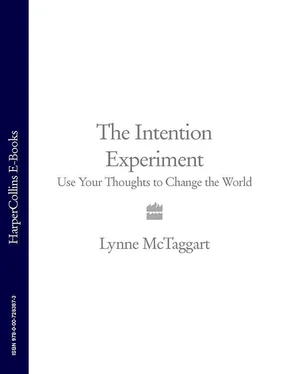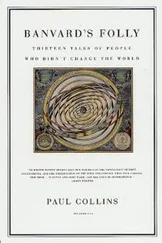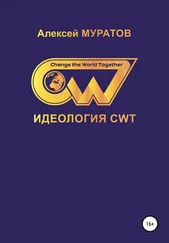1 ...8 9 10 12 13 14 ...25 Many strange properties of the quantum world, like uncertainty or entanglement, could be explained if you factored in the constant interaction of all quantum particles with the Zero Point Field. To Puthoff, science’s understanding of the nature of entanglement was analogous to two sticks stuck in the sand at the edge of the ocean, about to be hit by a huge wave. If they both were knocked over, and you did not know about the wave, you would think that one stick was affecting the other and call it a non-local effect. The constant interaction of quantum particles with the Zero Point Field might be the underlying mechanism for non-local effects between particles, allowing one particle to be in touch with every other particle at any moment. 21
Benni Reznik’s work in Israel with the Zero Point Field and entanglement began mathematically with a central question: what would happen to a hypothetical pair of probes interacting with the Zero Point Field? According to his calculations, once they began interacting with the Zero Point Field, the probes would begin talking to each other and ultimately become entangled. 22
If all matter in the universe were interacting with the Zero Point Field, it meant, quite simply, that all matter was interconnected and potentially entangled throughout the cosmos through quantum waves. 23And if we and all of empty space are a mass of entanglement, we must be establishing invisible connections with things at a distance to ourselves. Acknowledging the existence of the Zero Point Field and entanglement offers a ready mechanism for why signals being generated by the power of thought can be picked up by someone else many miles away.
* * * Sai Ghosh had proved that non-locality existed in the large building blocks of matter and the other scientists proved that all matter in the universe was, in a sense, a satellite of a large central energy field. But how could matter be affected by this connection? The central assumption of all of classical physics is that large material things in the universe are set pieces, a fait accompli of manufacture. How can they possibly be changed?
Vedral had an opportunity to examine this question when he was invited to work with the renowned quantum physicist Anton Zeilinger. Zeilinger’s Institute for Experimental Physics lab at the University of Vienna was at the very frontier of some of the most exotic research into the nature of quantum properties. Zeilinger himself was profoundly dissatisfied with the current scientific explanation of nature, and he had passed on that dissatisfaction and the quest to resolve it to his students.
In a flamboyant gesture, Zeilinger and his team had entangled a pair of photons from beneath the River Danube. They had set up a quantum channel via a glass fibre and run it across the river bed of the Danube. In his lab, Zeilinger liked to refer to individual photons as Alice and Bob, and sometimes, if he needed a third photon, Carol or Charlie. Alice and Bob, separated by 600 metres of river and nowhere in sight of each other, maintained a non-local connection. 24
Zeilinger was particularly interested in superposition, and the implications of the Copenhagen Interpretation – that subatomic particles exist only in a state of potential. Could objects, and not simply the subatomic particles that compose them, he wondered, exist in this hall-of-mirrors state? To test this question, Zeilinger employed a piece of equipment called a Talbot Lau interferometer, developed by some colleagues at MIT, using a variation on the famous double-slit experiment of Thomas Young, a British physicist of the nineteenth century. In Young’s experiment, a beam of pure light is sent through a single hole, or slit, in a piece of cardboard, then passes through a second screen with two holes before finally arriving at a third, blank screen.
When two waves are in phase (that is, peaking and troughing at the same time), and bump into each other – technically called ‘interference’ – the combined intensity of the waves is greater than each individual amplitude. The signal gets stronger. This amounts to an imprinting or exchange of information, called ‘constructive interference’. If one is peaking when the other troughs, they tend to cancel each other out – called ‘destructive interference’. With constructive interference, when all the waves are wiggling in synch, the light will get brighter; destructive interference will cancel out the light and result in complete darkness.
In the experiment, the light passing through the two holes forms a zebra pattern of alternating dark and light bands on the final blank screen. If light were simply a series of particles, two of the brightest patches would appear directly behind the two holes of the second screen. However, the brightest portion of the pattern is halfway between the two holes, caused by the combined amplitude of those waves that most interfere with each other. From this pattern, Young was the first to realize that light beaming through the two holes spreads out in overlapping waves.
A modern variation of the experiment fires off single photons through the double slit. These single photons also produce zebra patterns on the screen, demonstrating that even single units of light travel as a smeared-out wave with a large sphere of influence.
Twentieth-century physicists went on to use Young’s experiment with other individual quantum particles, and held it up as proof that quantum physics had Through-the-Looking-Glass properties: quantum entities acted wavelike and travelled though both slits at once . Fire a stream of electrons at the triple screens, and you end up with the interference patterns of alternating light and dark patches, just as you do with a beam of light. Since you need at least two waves to create such interference patterns, the implication of the experiment is that the photon is somehow mysteriously able to travel through both slits at the same time and interfere with itself when it reunites.
The double-slit experiment encapsulates the central mystery of quantum physics – the idea that a subatomic particle is not a single seat but the entire stadium. It also demonstrates the principle that electrons, which exist in a hermetic quantum state, are ultimately unknowable. You could not identify something about a quantum entity without stopping the particle in its tracks, at which point it would collapse to a single point.
In Zeilinger’s adaptation of the slit experiment, using molecules instead of subatomic particles, the interferometer contained an array of slits in the first screen, and a grating of identical parallel slits in the second one, whose purpose was to diffract (or deflect) the molecules passing by. The third grating, turned perpendicular to the beam of molecules, acted as a scanning ‘mask’, with the ability to calculate the size of the waves of any of the molecules passing through, by means of a highly sensitive laser detector to locate the positions of the molecules and their interference patterns.
For the initial experiment, Zeilinger and his team carefully chose a batch of fullerene molecules, or ‘buckyballs’ made of 60 carbon atoms. At one nanometre apiece, these are the behemoths of the molecular world. They selected fullerene not only for its size but also for its neat arrangement, with a shape like a tiny symmetrical football.
It was a delicate operation. Zeilinger’s group had to work with just the right temperature; heating the molecules just a hair too much would cause them to disintegrate. Zeilinger heated the fullerenes to 900 K so they would create an intense molecular beam, then fired them through the first screen; they then passed through the second screen before making a pattern on the final screen. The results were unequivocal. Each molecule displayed the ability to create interference patterns with itself. Some of the largest units of physical matter had not ‘localized’ into their final state. Like a subatomic particle, these giant molecules had not yet gelled into anything real.
Читать дальше











